Related Research Articles

Joseph of Arimathea was, according to all four canonical gospels, the man who assumed responsibility for the burial of Jesus after Ηis crucifixion. The historical location of Arimathea is uncertain, although it has been identified with several towns. A number of stories that developed during the Middle Ages connect him with Glastonbury, England, and also with the Holy Grail legend.
A Judensau is a folk art image of Jews in obscene contact with a large sow, which in Judaism is an unclean animal, that appeared during the 13th century in Germany and some other European countries; its popularity lasted for over 600 years.

Moses Schreiber (1762–1839), known to his own community and Jewish posterity in the Hebrew translation as Moshe Sofer, also known by his main work Chatam Sofer, Chasam Sofer, or Hatam Sofer, was one of the leading Orthodox rabbis of European Jewry in the first half of the nineteenth century.
Judah ben Samuel of Regensburg, also called Yehuda HeHasid or 'Judah the Pious' in Hebrew, was a leader of the Chassidei Ashkenaz, a movement of Jewish mysticism in Germany considered different from the 18th-century Hasidic movement founded by the Baal Shem Tov.

The Rhineland massacres, also known as the German Crusade of 1096, or Gzerot Tatnó, were a series of mass murders of Jews perpetrated by mobs of German Christians of the People's Crusade in the year 1096, or 4856 according to the Jewish calendar. These massacres are seen as the first in a sequence of antisemitic events in Europe which culminated in the Holocaust.

Karl Theodor Anton Maria von Dalberg was Prince-Archbishop of Regensburg, Arch-Chancellor of the Holy Roman Empire, Bishop of Constance and Worms, prince-primate of the Confederation of the Rhine and Grand Duke of Frankfurt.
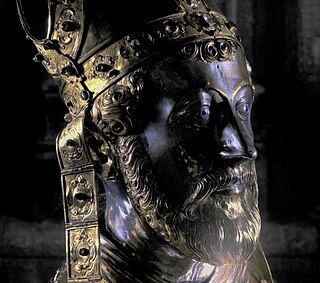
Saint Servatius was bishop of Tongeren —Latin: Atuatuca Tungrorum, the capital of the Tungri—. Servatius is patron saint of the city of Maastricht and the towns of Schijndel and Grimbergen. He is one of the Ice Saints. His feast day is May 13.

Yaakov ben Moshe Levi Moelin was a Talmudist and posek best known for his codification of the customs (minhagim) of the German Jews. He is also known as Maharil - the Hebrew acronym for "Our Teacher, the Rabbi, Yaakov Levi" - as well as Mahari Segal or Mahari Moelin. Maharil's Minhagim was a source of law for Moses Isserles’ component of the Shulkhan Arukh.

The Two Ewalds were Saint Ewald the Black and Saint Ewald the Fair, martyrs in Old Saxony about 692. Both bore the same name, but were distinguished by the difference in the colour of their hair and complexions. They began their mission labours about 690 at the ancient Saxons country, now part of Westphalia, and covered by the dioceses of Münster, Osnabrück, and Paderborn. They are honored as saints in Westphalia.
The history of the Jews and the crusades became a part of the history of antisemitism for the Jews in the Middle Ages. The call for the First Crusade touched off new persecutions of the Jews that would continue on and off for centuries.
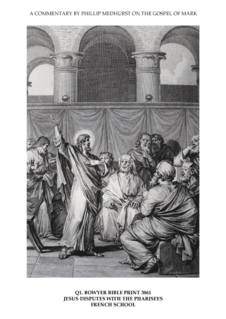
This article relates to a number of episodes in the New Testament in which Jesus was rejected in accordance with the Jewish tradition which was followed during his lifetime.

Saint Emmeram of Regensburg was a Christian bishop and a martyr born in Poitiers, Aquitaine. Having heard of idolatry in Bavaria, Emmeram travelled to Ratisbon (Regensburg) some time after the year 649 to the court of Theodo I, Duke of Bavaria. He supposedly travelled up the Loire, crossed through the Black Forest and then followed the Danube to Regensburg. Theodo welcomed Emmeram to his court, where he laboured for three years carrying out missionary work. During this time, he gained a reputation as a pious man. He died circa 652 and is buried in St. Emmeram's in Regensburg, Germany. His feast day in the Catholic Calendar of saints is September 22.
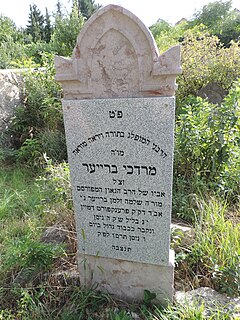
SolomonBreuer was a Hungarian-born German rabbi, initially in Pápa, Hungary, and from the early 1890s in Frankfurt as a successor of his father-in-law Samson Raphael Hirsch.

Anderl (Andreas) Oxner von Rinn, also known as Andreas Oxner, is a folk saint of the Roman Catholic Church. A later writer alleged that the three-year-old boy had been ritually murdered by the Jews in the village of Rinn.

Donatus of Muenstereifel is a catacomb saint whose relics are found in the Jesuit church in Bad Muenstereifel. He is widely venerated in the Rhine valley region of Germany and the Low Countries, and he is a patron saint of Buda and of protection against lightning. His relics were translated to Muenster Eifel in the 17th century from the Catacombs of Rome, where he had been originally buried.

Werner of Oberwesel was a 16-year-old boy whose unexplained death was blamed on Jews, leading to revenge killings of Jews across Europe. He was venerated as a Christian saint, and his memorial day was 19 April.

Amram ben Diwan was a venerated 18th-century rabbi whose tomb has become the site of an annual pilgrimage.
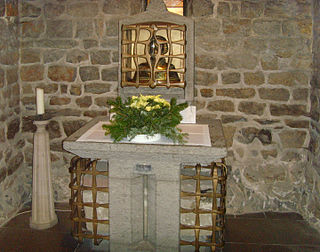
Lubentius is a Christian saint, venerated by the Catholic Church. A patron saint of the boatmen on the River Lahn, his feast day is 13 October.
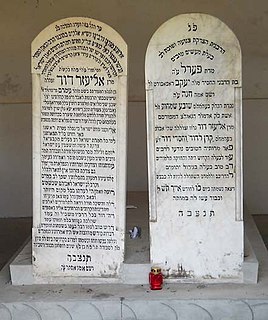
Rabbi Eliezer David Greenwald (1867-1928) was a rabbi and head of a yeshiva in the cities of Tzehlim, Oberwischau and Satmar in Transylvania. He is known for his book Keren L'David. Brother of Rabbi Moshe Greenwald, author of "Arugat HaBosem".
Rabbi Joel ben Isaac ha-Levi also known as Rav Joel of Bonn was a 12th-century German Tosafist, and the father of Eliezer ben Joel HaLevi.
References
 This article incorporates text from a publication now in the public domain : Singer, Isidore; et al., eds. (1901–1906). "Amram of Mayence (Mentz)". The Jewish Encyclopedia . New York: Funk & Wagnalls.
This article incorporates text from a publication now in the public domain : Singer, Isidore; et al., eds. (1901–1906). "Amram of Mayence (Mentz)". The Jewish Encyclopedia . New York: Funk & Wagnalls.